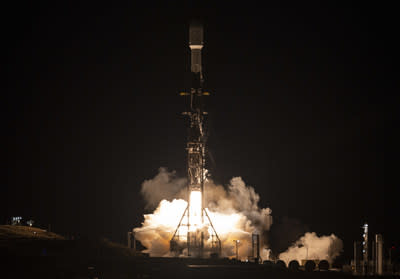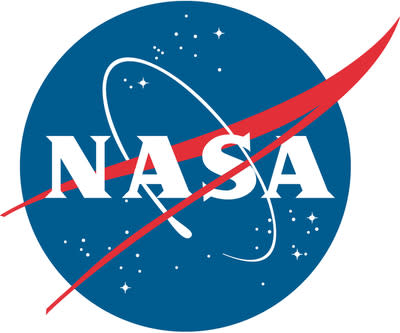NASA Launches International Mission to Survey Earth’s Water
WASHINGTON, Dec. 16, 2022 /PRNewswire/ — A satellite built for NASA and the French space agency Centre National d’Études Spatiales (CNES) to observe nearly all the water on our planet’s surface lifted off on its way to low-Earth orbit at Friday, 3:46 AM PST. The contributions to the Surface Water and Ocean Topography (SWOT), spacecraft are also from Canada’s Space Agency (CSA), and the UK Space Agency.
The SWOT spacecraft launched atop a SpaceX rocket from Space Launch Complex 4E at Vandenberg Space Force Base in California With a three-year prime mission. The satellite will measure the heights of freshwater bodies and oceans on more than 90% Earth’s surface. This information will allow communities to better prepare for floods and other natural disasters.
After SWOT separated from the second stage of a SpaceX Falcon 9 rocket, ground controllers successfully acquired the satellite’s signal. Initial telemetry reports confirmed that the spacecraft is in good health. SWOT now needs to be calibrated and checked before it can begin collecting science data within six months.
“Warming seas, extreme weather, more severe wildfires – these are only some of the consequences humanity is facing due to climate change,” said NASA Administrator Bill Nelson. “The climate crisis demands an all-hands-on deck approach. SWOT is the realization a long-standing international partnership which will ultimately better equip communities to face these challenges.
SWOT will scan the entire Earth between 78° south and 78° north latitudes at least once every 21-days, returning approximately one terabyte worth of unprocessed data each day. The innovative Ka-band radar interferometer, (KaRIn), is the scientific heart of the spacecraft. This represents a significant technological advancement. KaRIn receives the return signal from the spacecraft using two antennas. It bounces radar pulses off of the water’s surface. This arrangement – one signal, two antennas – will enable engineers to precisely determine the height of the water’s surface across two swaths at a time, each of them 30 miles (50 kilometers) wide.
“We are eager to see SWOT in action,” he said. Karen St. Germain, NASA Earth Science Division director. “This satellite shows how science and technological innovations are improving Earth’s quality of life. The data that innovation will provide is essential to better understanding how Earth’s air, water, and ecosystems interact – and how people can thrive on our changing planet.”
One of the many benefits that the SWOT mission can provide is a much clearer picture on Earth’s freshwater bodies. It will have data on over 95% of the world’s larger lakes (622,500 square meters) or rivers that are more than 330 feet wide (100 meters). Only a handful of thousand lakes are currently available for freshwater researchers around the globe. This number will rise to the millions with SWOT.
SWOT will provide data on the sea level along the coast. It will also fill in observations gaps in areas without tide gauges or other instruments to measure sea height. These data will help researchers track sea level rise over time and directly affect coastal communities.
NASA’s long-standing commitment is to working with international agencies to study Earth’s climate. This makes it possible for NASA to undertake such ambitious missions. CNES and NASA have been working together for decades to continue a relationship that began in 1980s to monitor Earth’s oceans. With the launch of the Space-Based Instrument Altimeter, this collaboration was the first to use a space-based instrument called the altimeter to study sea levels. TOPEX/Poseidon Satellite was launched in 1992.
“This mission marks the continuation of 30 years’ collaboration between NASA in altimetry and CNES,” said Caroline LaurentCNES Orbital Systems and Applications Director. It is a great example of international cooperation through a groundbreaking mission that will enable us to better understand the effects of climate change on the planet.
SWOT measurements can also be used by policymakers and resource managers to help them better plan for and assess floods or droughts. By providing information on where the water is – where it’s coming from and where it’s going – researchers can improve flood projections for rivers and monitor drought effects on lakes and reservoirs.
“SWOT will provide vital data, given the urgent challenges posed climate change and sea-level rise,” she said. Laurie LeshinDirector, NASA’s Jet Propulsion Laboratory. JPL created the KaRIn instrument, and oversees the U.S. part of the mission. “SWOT will fill gaps and inform future actions. It is the direct result many years of dedication, innovation, collaboration and cooperation. We are thrilled to get SWOT science moving.
More information about the mission
JPL is managed by Caltech for NASA. Pasadena, CaliforniaThe U.S. component is headed by. NASA provides the KaRIn instrument, the GPS science receiver, the laser retroreflector and two-beam radiometers for the flight system payload. NASA also operates the instrument operations. CNES provides the Doppler Orbitography Integrated by Satellite system (DORIS), the dual frequency Poseidon Altimeter (developed jointly by Thales Alenia Space), and the KaRIn radiofrequency subsystem (together Thales Alenia Space with support from UK Space Agency), as well as the satellite platform and ground control segment. The KaRIn high-power transmitter is provided by CSA. NASA will provide the launch vehicle. NASA’s Launch Services Program based at Kennedy Space Center is responsible for managing the launch services.
Visit:

To view original content, you can download multimediahttps://www.prnewswire.com/news-releases/nasa-launches-international-mission-to-survey-earths-water-301705257.html
NASA – SOURCE

